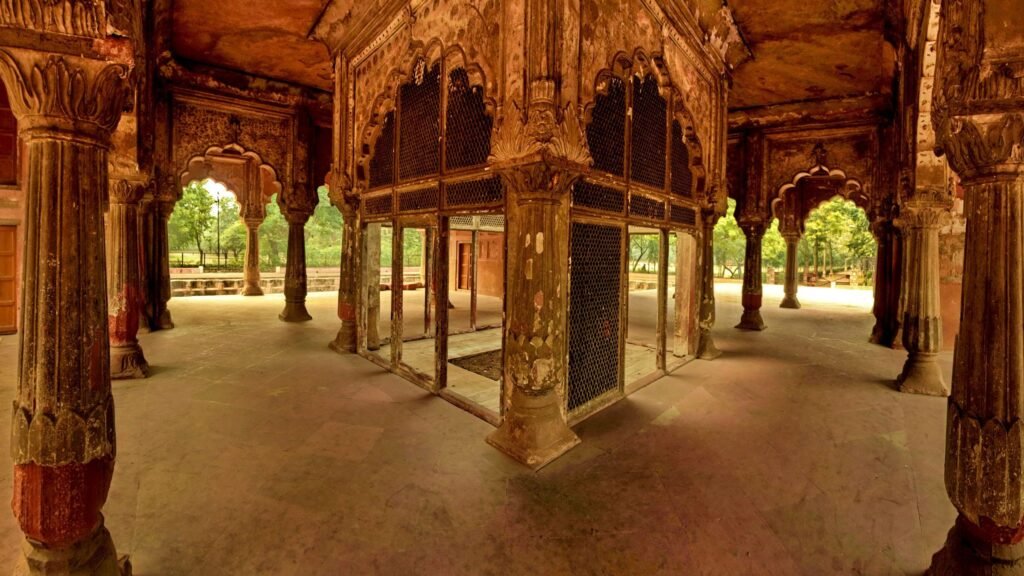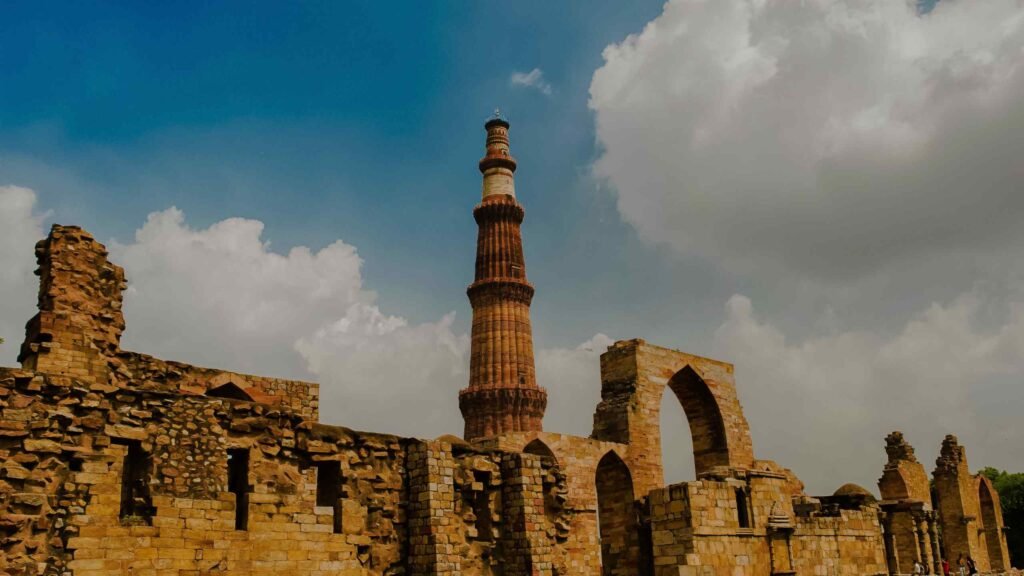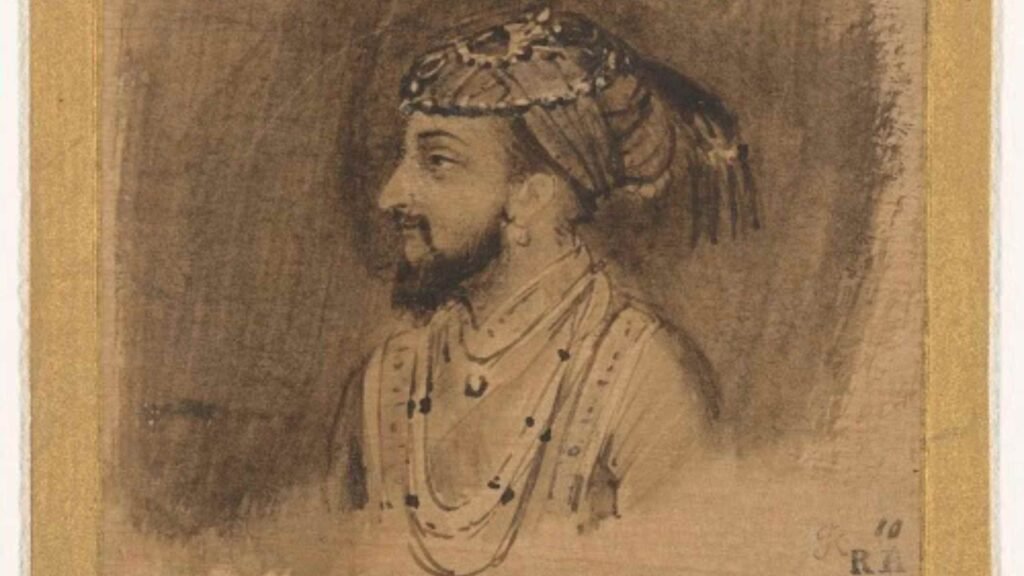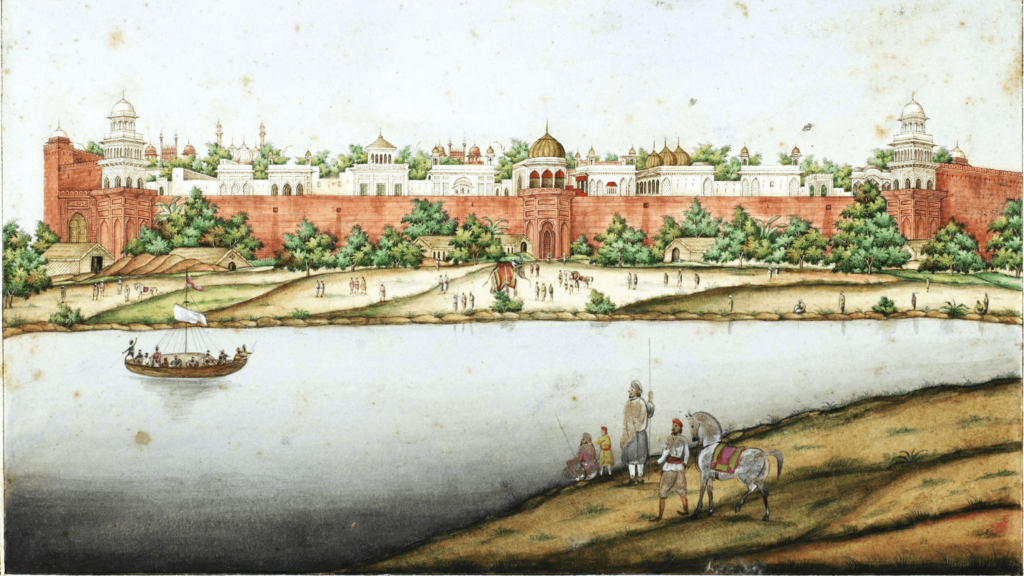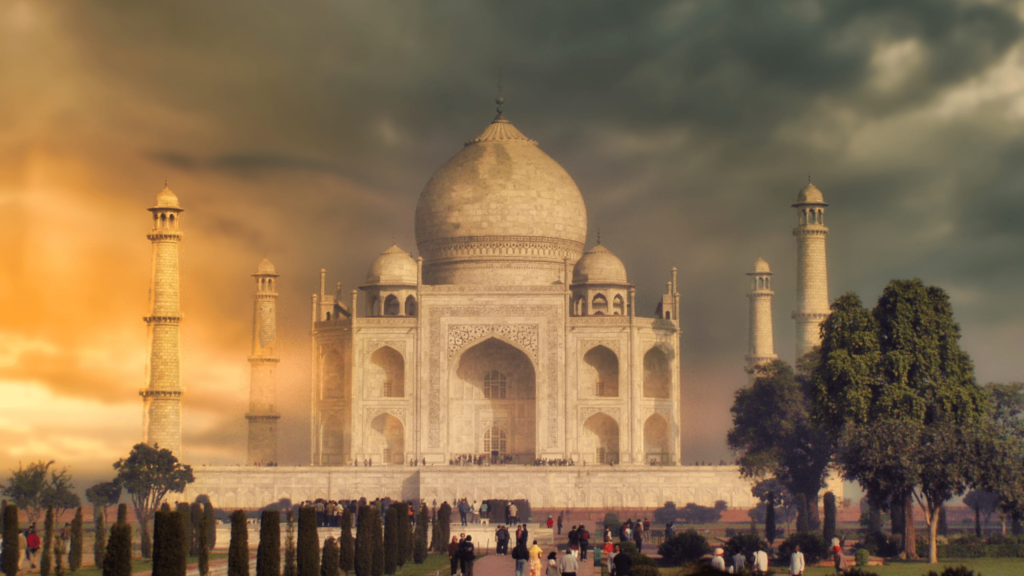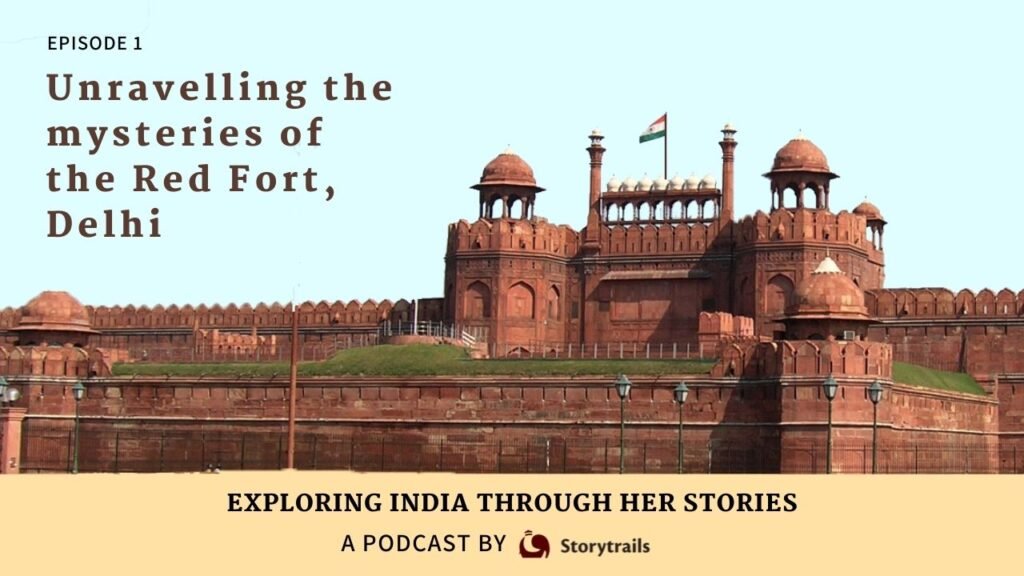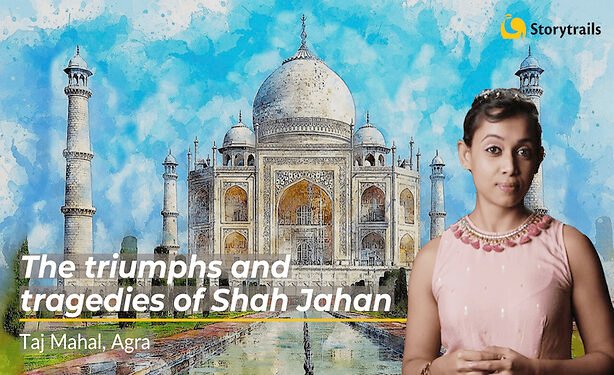Inside the Qutub Minar complex is a very ornate doorway – called the Alai Darwaza. It’s the southern gateway of the Quwwat-ul-Islam Mosque in the complex. The original plan was to construct three more such gates, but that never came to pass. The builder of Alai Darwaza left one more unfinished project in the same complex – a tower that was supposed to be taller and grander than the Qutub Minar itself. Who built these structures and why were they incomplete?
History textbooks are replete with stories of Alauddin Khilji’s terrible doings: a heartless human, a ruthless king, and an evil fanatic are some of the ways in which he is described. Some swear his misdeeds were the product of a deranged mind. Others say, to be fair, these acts were political necessities.
Detour: This short video explores the many facets of Alauddin Khilji’s character.
Alauddin was indeed a ruthless king. He murdered his own uncle to become the sultan of Delhi. He was a cruel administrator, punishing petty crimes with severity. But he was also a brilliant general, and he kept the Mongols, known to wipe out entire cities and cultures, out of India, not once but several times.

Like most kings, he wanted to enjoy long-lasting fame and adoration, and he realised that the best way to do that was to create grand monuments. The Hauz-i-Khas reservoir that he constructed supplied water to Delhi long after he died; and the Siri Fort protected Delhi till Sher Shah’s invasion. He constructed a Madrassa (religious school) within the Qutub complex. But perhaps his finest project was the Alai Darwaza (“Alauddin’s Gate”).
Detour: You may also like this interesting story about the Qutub Minar. Who is the Qutub Minar really named after?
Inside the Qutub complex is the Quwwat-ul-Islam Mosque (12th century CE), believed to be one of the oldest mosques in India. Alauddin decided to embellish it with four grand gateways, one in each cardinal direction. In 1311, he constructed the first gateway – the Alai Darwaza.
What makes the Alai Darwaza special?
Until the arrival of Islamic rulers, buildings in India usually had flat roofs or a pyramidal structure. So structures were held together by beams and lintels. Islamic builders, on the other hand, had begun experimenting with arches many centuries earlier, and domes were common in their designs. Islamic architectural design began arriving in India by the late 12th century with the Muslim invaders. New buildings now sprang up, sporting graceful circular domes. In those days, however, the Indian craftsmen actually executed these blueprints; they had never seen domes and arches before. So, they improvised with adaptations and interpretations on the fly. What emerged was a fusion style called Indo-Islamic. Some of the early Indo-Islamic structures were less sophisticated. For instance, the dome that was atop Iltutmish’s tomb, within the same complex, collapsed after some years.
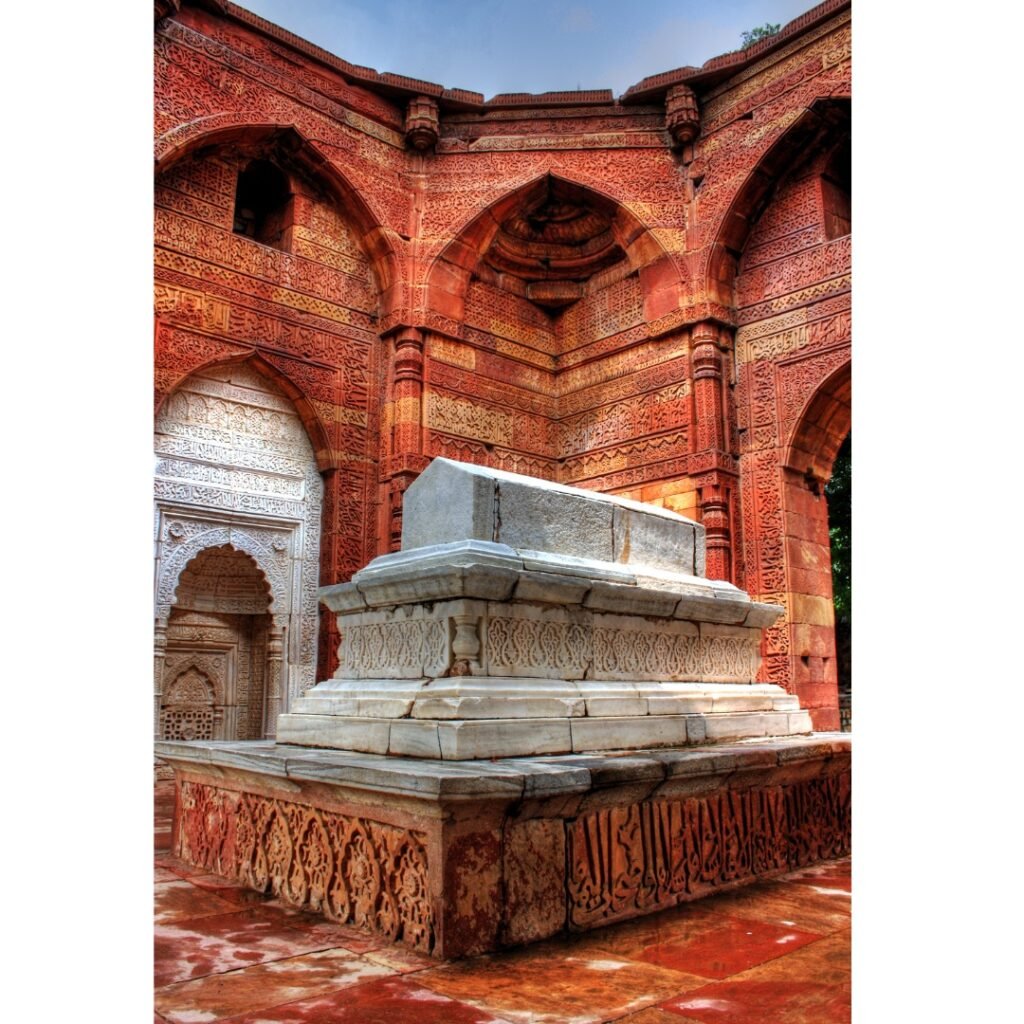
However, the Alai Darwaza was special. Many scholars believe that the Alai Darwaza is the earliest example of pure classic Islamic architecture. Alauddin brought in veteran Turkic master-craftsmen from Central Asia, and set them to work on this structure. They built true domes and true arches with mathematical precision. The windows were covered with finely worked Jaalis, which are beautiful lace-like screens painstakingly carved out of stone.

And these were surrounded by very ornate calligraphy. Add to this the contrast of red sandstone with white marble, and the result was a stately monument that set a new trend in the architecture of that time.

Khilji also commissioned the Alai Minar, a tower that was supposed to be twice as tall as the Qutub Minar! The tower was meant to be the crowning glory of his achievements, a way to celebrate his victories over various kingdoms in India. But what we can see today in the Qutub Minar complex is just the base of the tower.
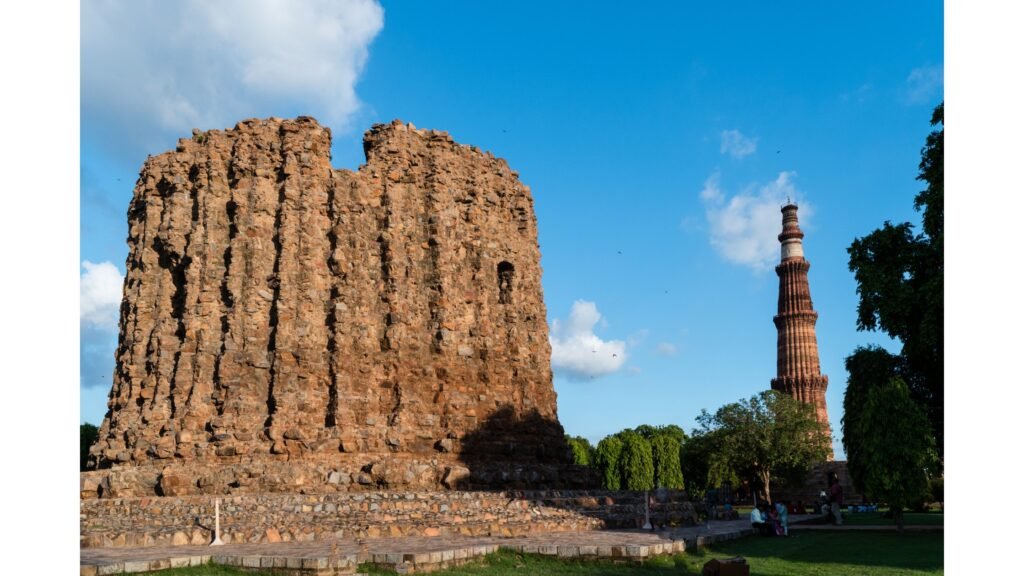
Alauddin Khilji died in 1316 before he could finish either of the projects. Upon his death, his slave-turned-partner Malik Kafur seized the throne from Alauddin’s legitimate heir, only to be murdered shortly. The Khilji dynasty then ended in a bloodbath over its successors.
Today, the Qutub Complex is a UNESCO World Heritage Site. And the stunning Alai Darwaza stands testimony to the style of one of Indian history’s most controversial rulers.

